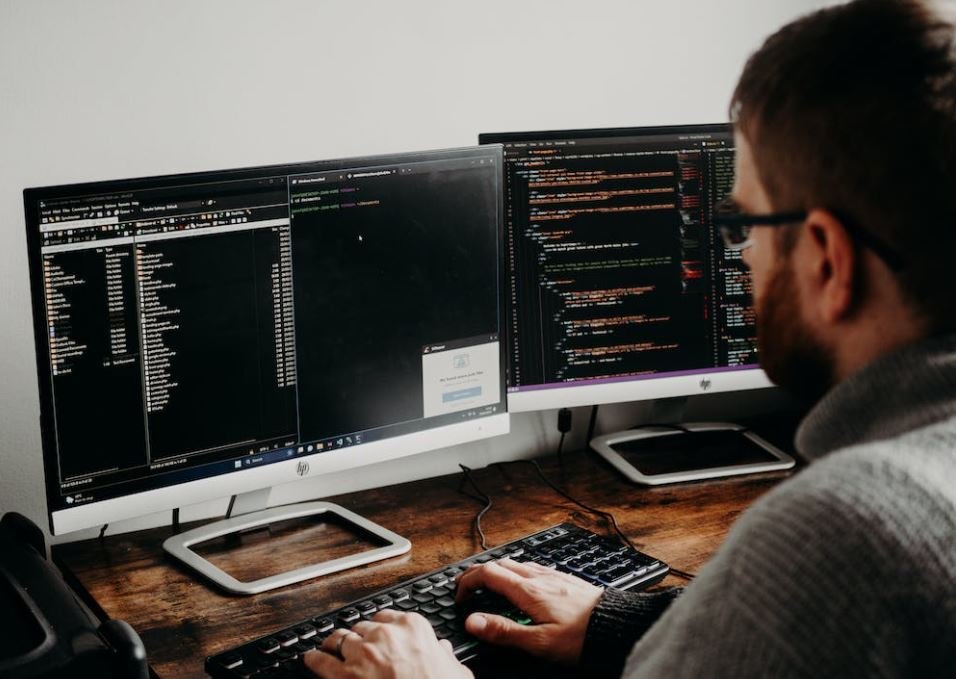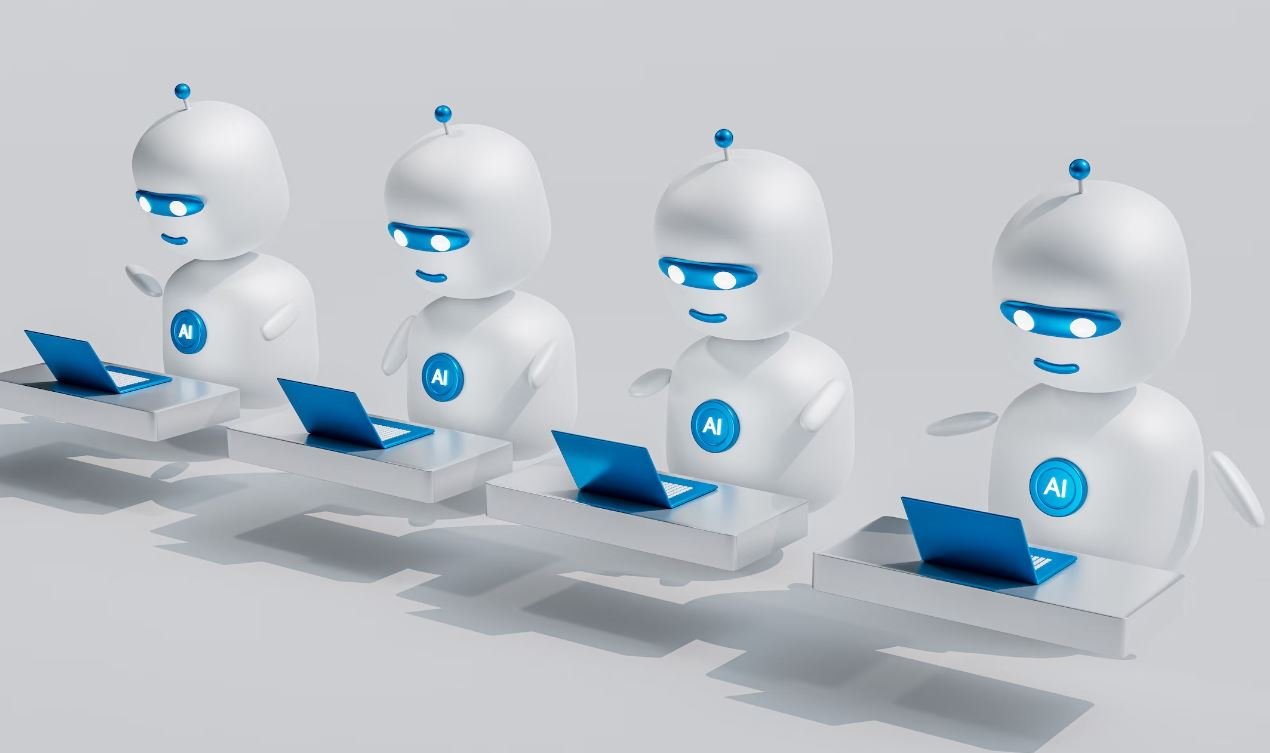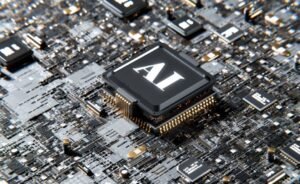Why Is Deepfake Important
Deepfake technology, which uses artificial intelligence to create realistic but fabricated media content, has become a pressing concern in recent years. It allows individuals to manipulate or fabricate videos, images, and audios that appear to be genuine. While deepfakes can be entertaining, their potential for misuse has raised significant ethical, legal, and societal concerns.
Key Takeaways:
- Deepfake technology allows for the creation of highly realistic fabricated media content using artificial intelligence.
- Deepfakes pose ethical, legal, and societal challenges due to their potential misuse.
- Increased awareness and development of countermeasures are crucial in combating the harmful effects of deepfakes.
Deepfake technology has gained prominence due to significant advancements in artificial intelligence and machine learning algorithms. *This technology is capable of creating highly convincing fake content by employing deep neural networks and generative adversarial networks (GANs).*
With increased accessibility to powerful computing resources and abundant publicly available data, deepfake creation has become relatively straightforward. *This ease of creation, combined with the realistic nature of deepfakes, makes it difficult for the naked eye to distinguish between real and fabricated media.*
One significant concern regarding deepfakes is their potential for spreading disinformation. Malicious actors can use deepfakes to propagate false information, manipulate public opinion, and undermine trust in visual evidence. This has severe implications for politics, elections, and public discourse.
Deepfakes also pose serious threats to privacy and consent. Individuals can be victimized by having their images or voices superimposed onto explicit or defamatory content without their knowledge or consent. This can lead to personal, professional, and reputational harm.
The Impact of Deepfake Technology
Deepfake technology has far-reaching implications across various areas, including:
- Politics and Elections: Deepfakes can be used to manipulate speeches, interviews, or debates, potentially influencing public opinion and election outcomes.
- Media Manipulation: Deepfakes can be used to create fake news or fabricated evidence, leading to the spread of misinformation and distrust in the media.
- Cybersecurity: Deepfakes can be utilized in social engineering attacks, where individuals or organizations are deceived into providing sensitive information.
Table 1: Examples of Deepfake Misuse
| Area of Misuse | Example |
|---|---|
| Politics | Deepfake video of a political candidate making false statements |
| Revenge Porn | Deepfake videos portraying individuals engaged in explicit acts |
| Identity Theft | Deepfake voice impersonation for financial fraud |
The potential threats posed by deepfakes have prompted the development of countermeasures. Researchers are actively working on deepfake detection techniques, looking for distinctive artifacts or inconsistencies that can help identify manipulated media. Tech companies and social media platforms are also implementing policies and AI-driven tools to flag and remove deepfake content.
Table 2: Deepfake Detection Methods
| Method | Description |
|---|---|
| Forensic Analysis | Analyzing digital traces to identify signs of manipulation |
| Biometric Analysis | Examining facial and vocal features to detect anomalies |
| Deep Learning Models | Training AI models to recognize patterns specific to deepfakes |
While the fight against deepfakes continues, it is essential for individuals to improve their media literacy skills to critically evaluate the content they encounter. Understanding the potential existence of deepfakes raises awareness and promotes a healthy skepticism towards the media.
Table 3: Tips to Identify Deepfakes
- Examine for unnatural facial movements or inconsistencies in lip-syncing.
- Listen for inaccuracies or anomalies in speech patterns and voice quality.
- Verify information from multiple trustworthy sources.
- Be cautious of sensational or controversial content without sufficient evidence.
Deepfake technology is not going away, and its implications will continue to evolve. The responsibility lies with technology developers, policymakers, and individuals alike to mitigate the potential harm and foster a society where authentic and trustworthy media prevails.

Common Misconceptions
Misconception 1: Deepfakes are only used for malicious purposes
One common misconception about deepfakes is that they are solely used for harmful activities. While it is true that deepfakes can be misused to create fake news, manipulate elections, or spread misinformation, it is important to note that deepfakes also have positive applications.
- Deepfakes can be used in the entertainment industry to create realistic special effects and enhance the overall cinematic experience.
- They can also be used for creative purposes like parody videos or art installations, enabling artists to explore new avenues of expression.
- Researchers are utilizing deepfakes to develop advanced facial recognition technologies and improve computer vision systems.
Misconception 2: Deepfakes can always be easily identified
Another misconception is that it is always easy to detect deepfakes. While there are certain telltale signs that can help identify some deepfakes, the technology behind deepfakes has been advancing rapidly, making it increasingly difficult to distinguish between real and fake.
- Modern deepfake algorithms can produce highly convincing results, making it challenging to spot alterations even for experts.
- Deepfake creators often employ sophisticated techniques such as blending multiple images, adjusting lighting conditions, and adding imperfections to make the fake videos seem genuine.
- With the advancement of AI, deepfakes are becoming more and more realistic, making it essential to develop robust detection methods to stay ahead of malicious uses.
Misconception 3: Deepfakes are only a concern for individuals
Some individuals believe that deepfakes are only a concern for personal privacy and reputation. However, the implications of deepfake technology go far beyond individual harm and have broader societal consequences.
- Deepfakes can be used to spread disinformation and manipulate public opinion, posing a threat to the integrity of democratic processes.
- They can lead to an erosion of trust by causing confusion about what is real and what is fake, which can have severe consequences for social cohesion.
- Deepfakes can also facilitate identity fraud, enabling cybercriminals to gather sensitive information or gain unauthorized access to systems.
Misconception 4: Deepfakes can only be created by experts
Many people assume that creating deepfakes requires advanced technical skills and expertise. While initially, it was true that deepfake creation required considerable knowledge, the proliferation of user-friendly tools and platforms has made the process more accessible to the average individual.
- Today, anyone with basic computer skills and access to deepfake software can create convincing deepfake videos without extensive technical knowledge.
- Online tutorials and communities provide step-by-step instructions and support, making it easier for novices to create deepfakes.
- This ease of access increases the potential for misuse and highlights the importance of raising awareness about the ethical implications of deepfakes.
Misconception 5: Deepfakes are a new phenomenon
Deepfakes have gained significant attention in recent years, but they are not a new phenomenon. The term “deepfake” was coined in 2017, but the underlying technology has roots that stretch back further.
- Deepfake technology was initially popularized by academic publications in the late 1990s and early 2000s.
- Since then, deepfake techniques have evolved and benefited from advances in machine learning and computing power.
- While the accessibility and ease of creating deepfakes have increased in recent years, it is worth noting that the overall concept and underlying technology have been in development for decades.

The Rise of Deepfake Technology
Deepfake technology refers to the use of artificial intelligence to create realistic manipulated media, typically involving video or audio. It has gained widespread attention and sparked debates due to its potential impact on various aspects of society, including politics, entertainment, and privacy. Below are ten tables that highlight the important aspects, implications, and challenges associated with deepfake technology.
The Impact of Deepfake Technology on Politics
Politics, being a realm heavily reliant on trust and credibility, is particularly vulnerable to the misuse of deepfake technology. The table below showcases several examples of deepfake incidents that have occurred in the political landscape, emphasizing the potential for manipulation and misinformation.
| Incident | Description |
|————————|———————————————|
| Election tampering | Deepfake videos altering politicians’ speeches, causing public opinion sway |
| Fake news propagation | Spreading false information through believable manipulated videos |
| Scandal fabrication | Creating scandals by modifying videos and audio recordings of public figures |
The Entertainment Industry and Deepfake
The entertainment industry has been both fascinated by and cautious about the use of deepfake technology. The table below presents different applications of deepfake in entertainment and the associated implications.
| Application | Description |
|————————|———————————————|
| Digital body doubles | Using deepfake to replace actors or actresses with digital avatars, reducing production costs |
| Voice manipulation | Altering the voices of actors to match different characters or mimic famous personalities |
| Film restoration | Enhancing and restoring old films using deepfake techniques |
Concerns Regarding Deepfake and Privacy
The emergence of deepfake technology has raised significant concerns about privacy and the potential for misuse. The table below outlines some key privacy-related concerns associated with deepfake technology.
| Privacy Concern | Description |
|————————|———————————————|
| Revenge porn | Deepfake used to create non-consensual explicit material |
| Blackmail potential | Criminals using deepfake to coerce individuals based on manipulated content |
| Identity theft | Creation of deepfake videos for impersonating individuals and committing fraudulent activities |
The Technological Advancements Enabling Deepfakes
Deepfake technology relies on several sophisticated techniques and tools for generating seemingly authentic content. The table below highlights some of the crucial technological components contributing to the development of deepfake technology.
| Technological Component | Description |
|—————————–|———————————————|
| Generative adversarial networks (GANs) | Machine learning algorithms pitting two models against each other to generate realistic outputs |
| Facial landmark detection | Identifying facial features and landmarks required for accurate face swaps |
| Natural language processing | Processing and manipulating audio to create realistic voice recordings |
The Legal and Ethical Implications of Deepfake
Deepfake technology’s potential to deceive and manipulate has significant legal and ethical implications. The table below highlights some of the critical challenges associated with deepfake in terms of regulations, consent, and responsibility.
| Implication | Description |
|—————————|———————————————|
| Consent and credibility | Challenges in obtaining consent and determining authenticity of digital content |
| Defamation and reputation damage | Potential harm to individuals whose images or voices are used in deepfakes without consent |
| Legal framework and consequences | Necessity for establishing laws to address deepfake creation and distribution |
Deepfakes in Journalism and Trustworthiness
The field of journalism faces new challenges in the face of deepfake technology. The table below showcases some instances where deepfakes can erode trust in media and journalistic authenticity.
| Aspect | Description |
|————————–|———————————————|
| Journalistic integrity | Deepfake videos used to create false evidence or misrepresent key events |
| News manipulation | Deepfakes altering the content and credibility of news, confusing the public |
| Verification challenges | Difficulties for journalists in identifying and debunking sophisticated deepfakes |
Deepfakes as Artistic Expression and Satire
While predominantly perceived as a threat, deepfake technology can also be a tool for artistic expression and satire. The table below provides examples of how deepfakes are created for creative purposes.
| Creative Application | Description |
|—————————-|———————————————|
| Digital artwork | Deepfake-generated digital art pieces challenging the notions of authenticity |
| Celebrity parodies | Creating humorous deepfake videos featuring celebrities in unlikely scenarios |
| Political satire | Using deepfake technology for political commentary and parody |
The Pros and Cons of Deepfake in Visual Effects
Deepfake techniques have shown potential benefits in the realm of visual effects. However, challenges and controversies also arise. The table below outlines the pros and cons of incorporating deepfake technology into visual effects.
| Pros | Cons |
|————————|————————————–|
| Cost-effectiveness | Ethical concerns related to consent |
| Realistic outcomes | Potential for misuse or abuse |
| Flexibility | Industry disruption and job displacement |
Combatting Deepfakes: Advances in Detection
The fight against deepfakes calls for the development of effective detection and verification methods. The table below highlights some techniques currently being utilized for detecting deepfakes.
| Detection Technique | Description |
|——————————–|———————————————|
| Facial inconsistencies | Analyzing disparities and imperfections in deepfake-generated faces |
| Metadata verification | Examining hidden metadata in media files to identify manipulated content |
| Machine learning algorithms | Utilizing AI-based algorithms to distinguish real from manipulated media |
Conclusion
As deepfake technology continues to advance, its impact on society becomes increasingly significant. While it presents both opportunities and challenges, the potential for misuse and deception demands a proactive approach. The tables mentioned above shed light on the various facets of deepfake technology, highlighting the importance of understanding its implications to navigate the evolving landscape of digital media with caution and discernment.
Frequently Asked Questions
What is deepfake technology?
Deepfake technology refers to the use of artificial intelligence and machine learning techniques to create or alter video, audio, or images to make them appear authentic but fabricated.
How does deepfake technology work?
Deepfake technology uses algorithms to analyze and manipulate large sets of data, such as images, videos, and audio samples, to create highly realistic fake content that can be difficult to distinguish from real ones.
What are the potential applications of deepfake technology?
Deepfake technology has a range of applications, including entertainment, artistic expression, and visual effects. However, it also raises concerns regarding malicious use, such as spreading misinformation or creating non-consensual explicit content.
Why is deepfake technology important?
Deepfake technology is important because it highlights the need for improved detection and authentication methods. Its potential for misuse underscores the urgency of developing countermeasures and educating the public about the risks.
What are the ethical implications of deepfake technology?
Deepfake technology raises ethical concerns related to privacy, consent, and the potential for exploitation. It can be used to deceive, manipulate, or defame individuals, leading to reputational damage or even societal unrest.
Can deepfake technology be used for positive purposes?
Yes, deepfake technology can be used positively, such as in the film industry to create convincing visual effects or in research to simulate various scenarios. However, ensuring its responsible and ethical application is crucial to prevent misuse.
What are the risks associated with deepfake technology?
The risks associated with deepfake technology include the spread of misinformation, identity theft, political manipulation, erosion of trust in media, and the potential for blackmail or fraud. It can have detrimental effects on individuals and society as a whole.
How can we detect deepfake content?
Detecting deepfake content is an ongoing challenge, but researchers and experts are developing advanced algorithms and tools to analyze subtle visual or audio cues, inconsistencies, and manipulations in the content. Combining technological solutions with media literacy can help identify deepfakes.
What measures are being taken to address the risks of deepfake technology?
Various measures are being taken to address the risks of deepfake technology. These include developing more robust detection methods, promoting media literacy and critical thinking, establishing legal frameworks, and encouraging industry-wide collaboration to combat malicious use.
How can individuals protect themselves from the potential harm of deepfake content?
Individuals can protect themselves from the potential harm of deepfake content by being cautious and skeptical of what they consume online, verifying sources, and educating themselves about the signs of deepfake manipulation. Raising awareness and staying updated on emerging technologies can also be helpful.




